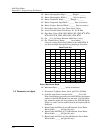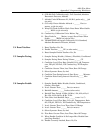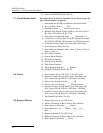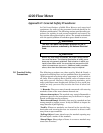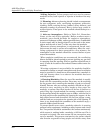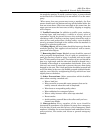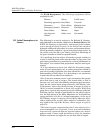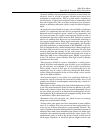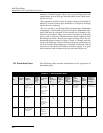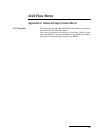
4220 Flow Meter
Appendix D General Safety Procedures
D-4
“10. Field Equipment. The following equipment will be
available for use:
D.2 Lethal Atmospheres in
Sewers
The following is an article written by Dr. Richard D. Pomeroy,
and published in the October 1980 issue of Deeds & Data of the
WPCF. Dr. Pomeroy is particularly well known for his studies,
over a period of nearly 50 years, in the field of the control of
hydrogen sulfide and other odors in sewers and treatment plants.
He has personally worked in a great many functioning sewers. In
the earlier years he did so, he admits, with little knowledge of
the grave hazards to which he exposed himself.
“It is gratifying that the subject of hazards to people working in
sewers is receiving much more attention than in past years, and
good safety procedures are prescribed in various publications on
this subject. It is essential that people know and use correct pro-
cedures.
“It is less important to know just what the hazardous compo-
nents of sewer atmospheres are, as safety precautions should in
general be broadly applicable, but there should be a reasonable
understanding of this subject. It is disturbing to see statements
in print that do not reflect true conditions.
“One of the most common errors is the assumption that people
have died from a lack of oxygen. The human body is able to
function very well with substantially reduced oxygen concentra-
tions. No one worries about going to Santa Fe, New Mexico, (elev.
2,100 meters), where the partial pressure of oxygen is equal to
16.2% (a normal atmosphere is about 21%) oxygen. When first
going there, a person may experience a little ‘shortness of breath’
following exercise. People in good health are not afraid to drive
over the high passes in the Rocky Mountains. At Loveland Pass,
oxygen pressure is 13.2% of a normal atmosphere. At the top of
Mt. Whitney, oxygen is equal to 12.2%t. Many hikers go there,
and to higher peaks as well. After adequate acclimation, they
may climb to the top of Mt. Everest, where oxygen is equal to
only 6.7%.
“The lowest oxygen concentrations that I have observed in a
sewer atmosphere was 13 percent. It was in a sealed chamber,
near sea level, upstream from an inverted siphon on a metro-
politan trunk. A man would be foolish to enter the chamber.
Without ventilation, he might die, but not from lack of oxygen.
Blowers Gloves Traffic cones
Breathing apparatus Hard Hats Coveralls
Harnesses First aid kits Manhole irons
Emergency flashers Pick axes Flashlights
Rain slickers Mirrors Ropes
Gas detectors Safety vests Gas masks
Waders”



